Browse Primary Sources
Locate primary sources, including images, objects, media, and texts. Annotations by scholars contextualize sources.
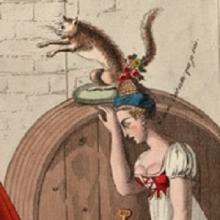
The Voracious Oath
This fascinating print is modeled on Jacques–Louis David’s Oath of the Horatii. In that famous painting, the artist sought to exemplify patriotic virtue by showing an austere father making his sons swear to defend Roman honor. Here this image turns David’s idea on its head, as aristocrats seem to be in league to some nefarious end.
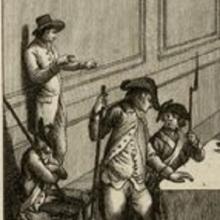
Robespierre Laid on the Table of the Committee of Public Safety
This Dutch engraving, based on a sketch by Berthault, shows Robespierre laid out on the table where his Committee of Public Safety did its work. It is the morning of 10 Thermidor and having been condemned to death by the Convention the night before, Robespierre and his followers now face their demise, as soldiers come to take them to the guillotine.
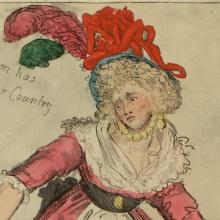
A Second Jean d'Arc
To those who considered Marat insincere and dangerous in his unrelenting populism, the true martyr was Charlotte Corday, who had come to Paris from Caen—a city then serving as a base for the federalist insurgency—apparently with the express intent of killing Marat.
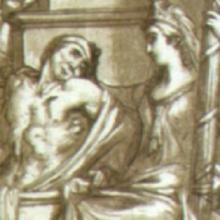
In Memory of Marat, Friend of the People, Assassinated 13 July, 1793
A leading voice on behalf of greater popular participation and social policies that would benefit the poor, the journalist Jean–Paul Marat used his radical newspaper the Friend of the People to criticize moderation.
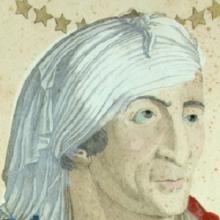
Bust of Marat
After Marat’s death, his defenders glamorized him, forgetting both his physical deformities and his vitriolic calls for more and more heads. One common approach was to give him secular sainthood (a halo in this image) incongruous for someone with so little patience with the church.
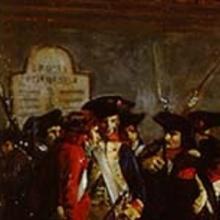
Robespierre 10 Thermidor—Exposition of 1877
This painting from 1877 shows in romantic style Robespierre dying in a large room, surrounded by soldiers and others. His shirt is bloodied and his left hand is on his chest; visible in the background is a tablet of the Declaration of Rights of Man and Citizen, suggesting that it was the cause for which Robespierre died. The image might be seen as a moment of secular apotheosis.
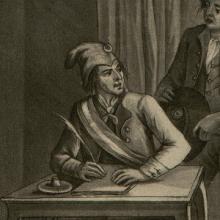
Assassination of J. P. Marat
An arrested Corday is hustled out of the door, while the inquest begins. The expired Marat, ghastly pale, looks much more realistic than in the David rendition of his death. Also, the bath in the shape of a boot, which differs from most images, is apparently accurate.
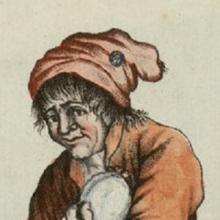
President of a Revolutionary Committee After the Seal Is Taken Off
Critics of popular action first mastered the art of searing attacks and here sharpen their propaganda skills against this activist worker, who appears to be walking off with his "loot" after the locks have been broken.
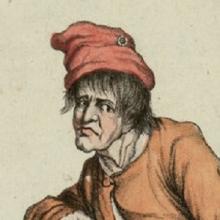
President of a Revolutionary Committee Distracting Himself with His Art While Waiting
The shoemaker shown here is president of his neighborhood revolutionary committee. Although this engraving does not portray a specific political activity, the character evokes hostility toward laborers and artisans who involved themselves in politics. The president hardly seems presidential.
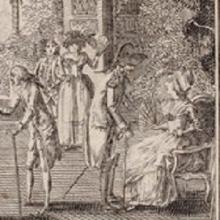
Opening of the Club of the Revolution: Circus Act
This engraving depicts a revolutionary club as a circus act complete with dancing dogs and clowns, all celebrating "the law and the King." This image might have been visual propaganda on behalf of clubs, suggesting that they could bring different people together under a big tent, in support of the constitutional monarchy, or it might have been visual farce, suggesting that the clubs and the con
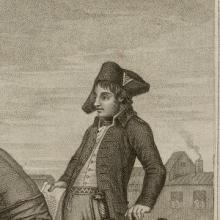
The Death of Robespierre
This engraving, based on a color portrait by Beys, depicts the death of Robespierre on the guillotine. The executioners wear not the traditional hangman’s hood but red bonnets representing liberty. This judgment notes Robespierre’s failure to the Revolution itself.

Traditional and Modern Primary Education in Thailand
The image shows the reverse of a Thai 100-baht banknote, with engravings of of King Chulalongkorn and King Vajiravudha statues. The banknote's background theme is education. The detail on the right illustrates Thailand's traditional education system, showing a monk instructing boys in the courtyard of a temple.
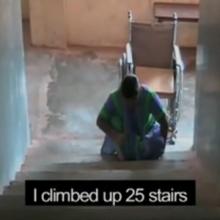
Young Voices on Disability, India
Yellamma Gangadhar is a young woman who relies on a wheelchair for mobility. Her film tells the story of abandonment by her parents at a bus station in Bangalore, India, subsequent help from the Leonard Cheshire home in the city, and the college education she acquired with great difficulty. The struggle featured in the film is access discrimination.
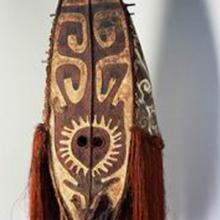
Boys' Initiation Mask (keweke)
This mask worn by boys during initiation rituals in Papua New Guinea is made of painted bark cloth and canvas stretched over a cane frame. The long fiber fringe adds movement to the mask, which is worn during dances and other secret rituals that that comprise boyhood initiation rites.
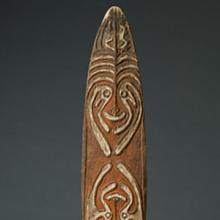
Gope, Ancestor or Spirit Boards
The object in the photograph is a gope, or spirit board (also called kwoi or hohao). This example is from Papua New Guinea near the Wapo Creek on the Gulf of Papua. Carved from an old canoe, this art form derives from the protective splashboard of the outrigger canoe, which was carved with a human face and was believed to have protective qualities.
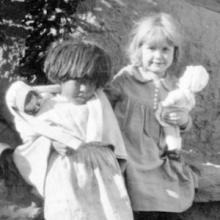
American Indian Girls Playing with Dolls
In this photograph, taken near the turn of the 20th century, American Indian girls in the southwestern United States are learning through play how to be mothers and keepers of the home. In this photograph, a Hopi girl in Arizona follows her mother's example; she wraps her baby doll in a blanket and carries her on her back, in contrast to the Anglo girl who holds her doll in her arms.
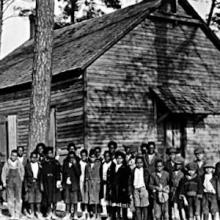
Blocksom’s School
These two photographs show before and after pictures of Blocksom's School in Sussex County in rural Delaware. The first photo (taken in 1917) shows the pupils standing outside the original one-room schoolhouse made of wood.
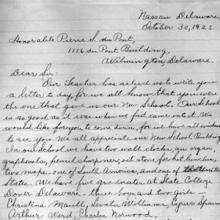
Student Letter to Pierre DuPont
Thelma Norwood, a 7th-grade student in Nassau, Delaware, wrote this letter in 1925. The school was segregated, or used only by African Americans, while separate schools were maintained for white students.
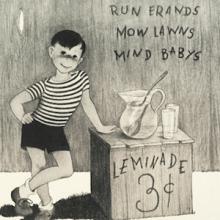
The Lemonade Stand
The lemonade stand is a widely used and recognized symbol of capitalism and in particular entrepreneurship. The selling of lemonade on the streets of New York can be traced back to when a New York youngster sold it to thirsty street car riders over 130 years ago. Its connection to youthful entrepreneurship has endured.
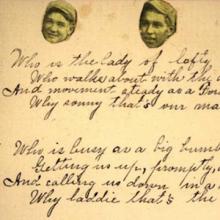
Christmas Poem, Pima Indian School
The poem and photographic collage is the work of students at the Pima Indian School boarding school near Phoenix, Arizona, and is part of an album probably owned by the school matron. The school was one of some 150 institutions for Indian wards of the U.S. Government.